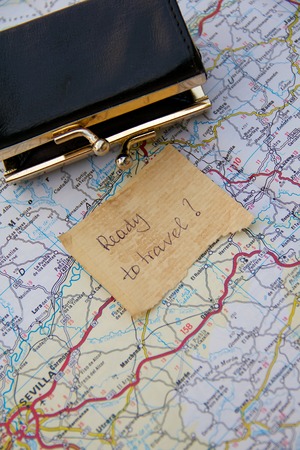Preparing Your Paperwork
Before setting off on a cross-border journey by car, UK licence holders must ensure they have all the essential documents in order. Border authorities across Europe and beyond are strict about paperwork, so a missing document can quickly turn your road trip into a frustrating ordeal. Start with your valid UK driving licence—it’s not only proof of your ability to drive but also required by most foreign police and customs officers. Next, always carry your vehicle’s V5C logbook (the registration certificate). This proves legal ownership and will be checked at many border crossings. Don’t forget comprehensive car insurance documents; check that your policy extends cover to the countries you’ll be visiting or transiting through—some insurers provide a ‘Green Card’ for proof of European coverage. In addition, pack your passport and any necessary visas for the countries on your route, as well as travel insurance details for yourself and any passengers. Having these papers organised in a dedicated folder makes presenting them at checkpoints straightforward and stress-free. Taking time to prepare this paperwork ensures you avoid unnecessary delays or fines, letting you focus on enjoying the open road ahead.
Understanding Customs Declarations
When driving across borders as a UK licence holder, getting to grips with customs declarations is essential. Whether you’re popping over to France for a spot of shopping or embarking on a longer European road trip, you’ll need to comply with customs requirements at each border. Here’s what you need to know about personal goods allowances, the paperwork involved, and how to declare items properly.
Personal Goods Allowances for UK Motorists
As a UK motorist, you’re entitled to bring certain goods into and out of the country without paying duty or tax, provided they are within the set allowances. These allowances cover alcohol, tobacco, gifts, and other personal items. Exceeding these limits means you must declare the goods and may be required to pay additional duty or tax.
Common Allowances at UK Borders
| Item | Allowance (per person) | Notes |
|---|---|---|
| Alcohol | 4 litres of spirits OR 9 litres of sparkling wine OR 18 litres of still wine | Can be split between different types; must be for personal use |
| Tobacco | 200 cigarettes OR 100 cigarillos OR 50 cigars OR 250g tobacco | Can be combined within allowance; personal use only |
| Other Goods (including gifts) | £390 (or £270 if arriving by private plane or boat) | Total value per person; includes souvenirs and gifts |
Customs Forms You May Need
If you’re carrying goods above these allowances or transporting restricted items (such as large amounts of cash or commercial products), you’ll need to complete specific customs forms. The most common forms include:
- C88 (SAD): The Single Administrative Document used for declaring goods to UK customs.
- C1331: Required when temporarily exporting your car outside the UK (e.g., taking your car on holiday outside the EU).
- Red and Green Channels: At ferry ports and airports, use the red channel if you have items to declare; otherwise, use the green channel.
What to Declare at the Border?
You must declare anything that exceeds your personal allowance or is subject to restrictions—this includes high-value electronics, foodstuffs, plants, large sums of cash (over €10,000), and commercial goods. Always check local rules for both entry and exit countries. Failing to declare can result in fines, confiscation, or even prosecution.
Handy Tips for Smooth Crossings:
- Keep receipts handy for any new purchases.
- If in doubt about an item, always ask a customs officer.
- Declare before you are asked—voluntary disclosure is looked upon favourably.
- Review both UK and destination country requirements before travel.
Navigating customs declarations doesn’t have to be daunting. With a bit of preparation and knowledge about what’s expected, UK motorists can cross borders confidently and avoid unnecessary hassle at customs checks.

3. Vehicle Checks and Compliance
Before setting off on your European road adventure, it’s crucial to make sure your car is fully compliant with both UK and EU requirements. Ignoring these checks could lead to hefty fines or even being turned back at the border. Here are some practical DIY tips for ensuring your vehicle meets legal standards when travelling abroad.
MOT and Roadworthiness
Your car must have a valid MOT certificate if it’s over three years old. Double-check the expiry date well before your trip, as driving without a valid MOT—even outside the UK—can land you in trouble with authorities both at home and abroad. Give your car a basic health check: inspect tyres for tread depth and damage, top up fluids, and test all lights and indicators.
Emissions Requirements
Some European cities operate low emission zones (LEZ) or require vehicles to display emissions stickers. Research your route and apply online for any necessary permits before you go. Check that your vehicle complies with the required Euro emissions standard—this information can usually be found in your V5C logbook.
DIY Tip:
Clean or replace air filters and use high-quality fuel before entering areas with strict emissions controls. This can help reduce pollutants and keep you compliant.
Headlamp Beam Deflectors
If you’re driving a UK-registered vehicle on the continent, remember that your headlights are set up for left-hand traffic. Fit headlamp beam deflectors to avoid dazzling other drivers. These stick-on kits are widely available at motoring shops and ferry terminals, and easy to apply yourself by following the instructions specific to your make and model.
European Safety Kit Essentials
Many European countries require drivers to carry certain safety items at all times. A typical kit should include:
- Reflective jackets (one for each occupant)
- A warning triangle
- First aid kit
- Spare bulbs
- Breathalyser kits (mandatory in France)
DIY Tip:
Assemble your own kit using a checklist or purchase a pre-packed version from a reputable supplier. Regularly check expiry dates on first aid supplies and breathalysers.
Final Pre-Departure Checklist
Give your car one last walkaround inspection before departure—check for cracked windscreens, worn wiper blades, or loose number plates. Taking these simple DIY steps will not only keep you legal but also help ensure a smoother journey across borders.
4. At the Border: What to Expect
Crossing an international border by car as a UK licence holder can seem daunting, but knowing what lies ahead will make the process much smoother. Here’s a practical walkthrough of what typically happens at border control, how to handle queues properly, and tips for both manned and automated passport checks.
Typical Border Control Procedures
When you approach the border, you’ll usually encounter designated lanes for cars. Signs will indicate whether you should join the lane for EU/EEA/Swiss citizens or ‘All Passports’, so pay attention to avoid delays. As you near the checkpoint, slow down and have your documents ready—this includes your passport, driving licence, vehicle registration (V5C), insurance details (the Green Card if required), and any customs declarations.
Common Documents You’ll Need
| Document | Purpose |
|---|---|
| Passport | Proof of identity and nationality |
| UK Driving Licence | Legal authority to drive abroad |
| Vehicle Registration (V5C) | Proof of vehicle ownership |
| Insurance Certificate | Demonstrates legal coverage |
| Customs Forms (if applicable) | For declaring goods or pets |
Queue Etiquette at the Border
The British take queuing seriously, and this extends to border crossings. Keep in your lane, maintain a safe distance from other vehicles, and avoid switching lanes unnecessarily. If you see border staff directing traffic, follow their instructions promptly. A polite nod or ‘thank you’ is always appreciated if staff assist you directly.
Manned vs Automated Passport Checks
Manned Controls
A border officer will check your documents, ask questions about your journey, and may inspect your vehicle. Answer politely and clearly—being prepared helps speed up the process. If asked to open your boot or show paperwork, cooperate fully.
Automated E-Gates
If available for UK passports, automated e-gates allow a quicker entry. Simply scan your passport as instructed; facial recognition technology verifies your identity. Remove hats or sunglasses before approaching the gate. If there’s an issue, you’ll be directed to speak with an officer.
Troubleshooting Common Issues at Passport Control
| Issue | DIY Solution/Tips |
|---|---|
| E-gate not working | Check passport page is clean; try again or seek help from staff |
| Papers missing/incorrect | Have digital copies on your phone; explain calmly and provide backup if possible |
By understanding each step and preparing accordingly, UK drivers can ensure their journey across borders remains smooth and stress-free.
5. Dealing with Unexpected Issues
Even with meticulous planning, border crossings by car can present a few curveballs. UK licence holders may encounter spot checks, misplaced paperwork, or communication difficulties. Here’s some practical advice for troubleshooting common problems and keeping your journey on track.
Missing Paperwork
It’s surprisingly easy to misplace an important document in the flurry of travel. If you realise you’re missing essential paperwork such as your V5C logbook, insurance green card, or proof of MOT, remain calm and courteous when speaking to border officials. Explain your situation clearly and ask if digital copies or supporting evidence can be accepted temporarily—many borders now recognise electronic documentation. If not, contact your insurer or the DVLA helpline straight away for guidance. It’s wise to keep scanned copies of key documents accessible via email or cloud storage before your trip for just such emergencies.
Spot Checks and Delays
Spot checks are part and parcel of crossing international borders by car, especially since Brexit. If selected for inspection, cooperate fully—produce all requested documents promptly and allow officers to inspect your vehicle as required. Be patient; delays are often unavoidable. To smooth the process, keep your car tidy and all paperwork easily accessible in a folder within arm’s reach. A polite attitude goes a long way towards speeding things up.
Language Barriers
English is widely spoken at major European border crossings, but this isn’t guaranteed everywhere. To avoid misunderstandings, prepare a folder containing translations of key phrases and documents (such as “driving licence,” “insurance certificate,” and “vehicle registration”) in the relevant local language. Free translation apps on your smartphone can also be invaluable if communication gets tricky. If you feel confused, don’t hesitate to ask officers to repeat themselves slowly or request written instructions.
Handy Tips for Handling Issues
- Always have a pen and paper handy for jotting down important information or notes from officials.
- If you need help, look for English-speaking staff or signage indicating assistance points.
- Remain respectful and composed—raising your voice rarely helps resolve situations faster.
Summary
A bit of preparation and a cool head will see you through most border hiccups without too much hassle. By anticipating possible setbacks and knowing how to respond, UK drivers can handle unexpected border issues with confidence and continue their journey with minimal disruption.
6. Returning to the UK: What’s Different?
Key Customs and Documentation Steps
Re-entering the UK by car involves a few unique steps compared to leaving. As you approach border control, ensure you have your passport, driving licence, vehicle registration (V5C), proof of insurance, and any documentation for goods you are carrying. British customs officials may ask for these documents to confirm your identity, vehicle ownership, and legal right to re-enter. It’s also wise to keep receipts for any high-value purchases or duty-free items bought abroad, as you may need to prove their value and origin.
Declaring Purchases: Red and Green Channels Explained
When you arrive at a UK port or Eurotunnel terminal, you’ll be directed towards the customs area with two main options: the Red Channel or the Green Channel. The Green Channel is for those with nothing to declare—meaning your purchases fall within the duty-free allowance and you aren’t carrying restricted or prohibited items. The Red Channel is for anyone who needs to declare goods over the allowance, cash amounts over £10,000, or items that require special permits.
How to Decide Which Channel to Use
If you’re unsure whether your goods exceed UK allowances (for example, tobacco, alcohol, or expensive electronics), it’s always best to check before travelling back. HMRC provides updated guidelines on allowances—exceeding them without declaration can result in fines or confiscation of goods. Remember: honesty at this stage saves hassle later!
Tips for Smooth Re-entry
- Organise all documents in advance for quick access at the border.
- If bringing back significant purchases, calculate values and keep all receipts handy.
- Declare anything you’re unsure about—border staff are there to help and will appreciate transparency.
- If stopped for inspection, remain calm and cooperative; answer questions directly and provide requested paperwork promptly.
By following these steps and staying well-prepared, returning home by car will be a straightforward end to your journey. Remember: proper documentation and honest declarations ensure a smooth passage through UK customs every time.


